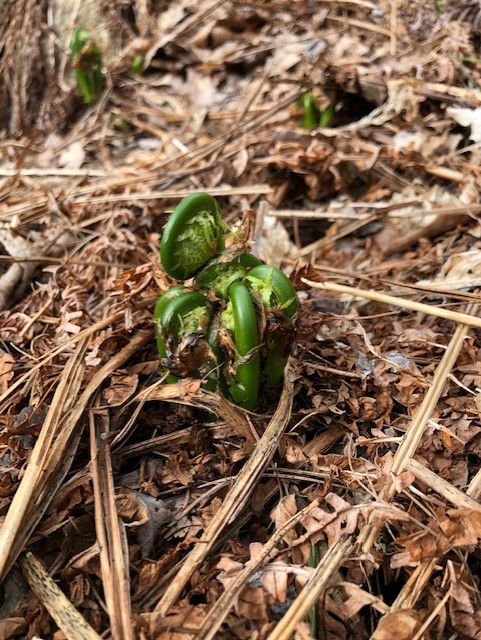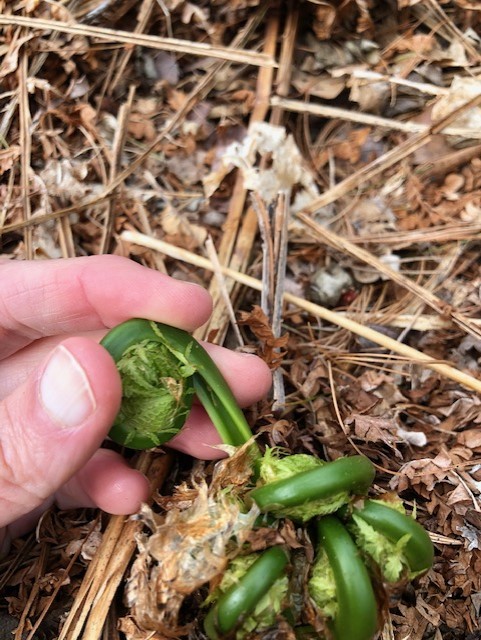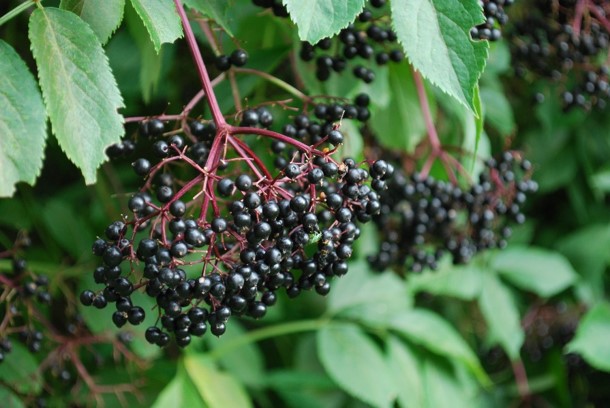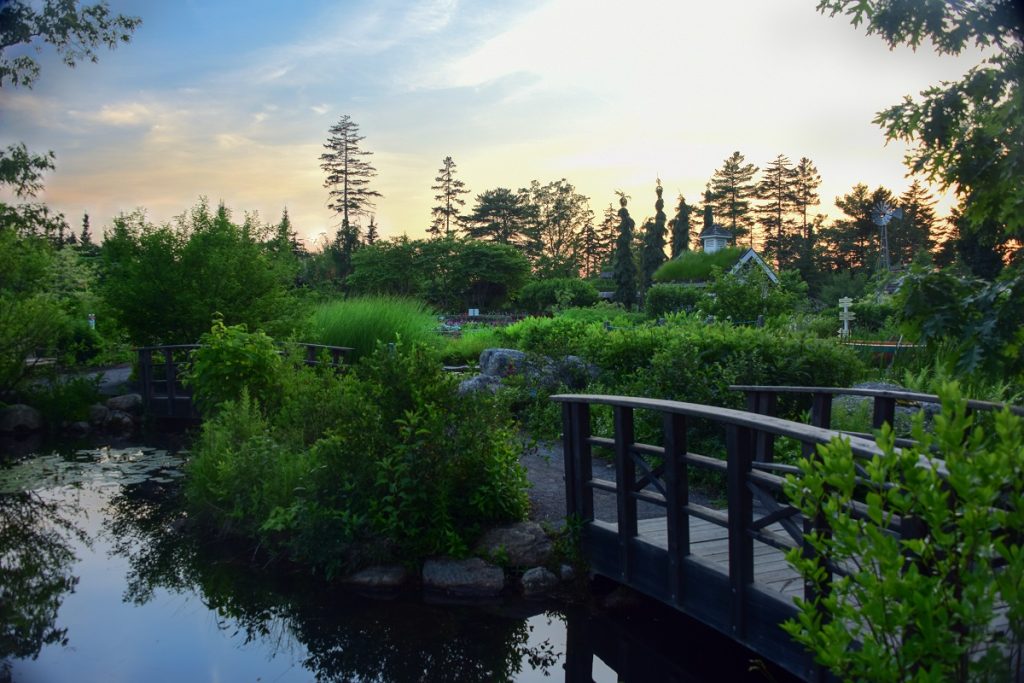Fiddleheads are out! Searching for these edible beauties is a great way to spend time outside on these beautiful spring days! There are many different varieties of edible, yet-to-unfurl ferns around the world, but here in Maine, our springtime delicacy is the ostrich fern (Matteuccia struthiopteris). These young ferns, most commonly found near creeks, rivers, wetlands and moist woodlands in early spring, look like small green fists punching their way through the soil. The main way to identify the edible fern is to look for a “U” shaped stem. Once you have found a patch, harvest them when they are 6” or so from the soil, and the frond is tightly curled, leaving a ½” stem “tail.”
To harvest, you can simply snap the curled frond with your fingers, or use a sharp pocketknife. It is very important to wash them well before cooking, changing the water several times and removing any papery residue. Once washed, and if you’re not going to eat them right away, you can store your fiddleheads in a container for a few days—but I recommend eating them while still fresh. The cooking time recommended by health authorities is 15 minutes if boiled and 10-12 minutes if steamed.
It doesn’t matter which cooking method you choose. Just remember: DO NOT EAT THEM RAW! Fiddleheads may harbor microbes and toxins, so cooking them fully is a must! I like to spread a thin layer of fiddleheads in a steam basket and steam lightly, just until tender crisp. Alternately, you can sauté them. They are wonderful with lemon or vinegar, butter, and/or garlic and herbs.
If you have a kitchen fryer that heats to around 350 degrees and want to be extra naughty, they are wonderful breaded in a light batter of equal parts flour and cornstarch with a bit of baking powder, salt & pepper, and sparkling water. Dip these delicate fried fiddleheads in a spicy or lemony aioli…makes my mouth water just thinking about it. Traditionally, my grandmother would boil them, refrigerate, then toss with store-bought Italian vinaigrette. My brother, cousins, and I would gobble these up as children and look forward to these spring treats every year.
Fun facts:
- Ferns reproduce from spores, so there are no seeds or flowers.
- Fiddleheads have more antioxidants than blueberries and are packed with omega 3 fatty acids and dietary fiber.
- History: Maliseet, Mikmaq, and Penobscot peoples of eastern Canada and Maine traditionally harvested fiddleheads, and the wild vegetable was officially introduced to the Acadian settlers in the early 18th
- There are many beautiful poems about fiddleheads by Matthew Dickman, Maureen Seaton, Ted Hughes, and Yomono Akara. I’ve also found some fun time lapse videos on YouTube showcasing the great unfurling of these ferns.
Have you tried fiddleheads? Every family has a favorite recipe—what’s yours?

~Ginger Dermott, Manager of Food Services

